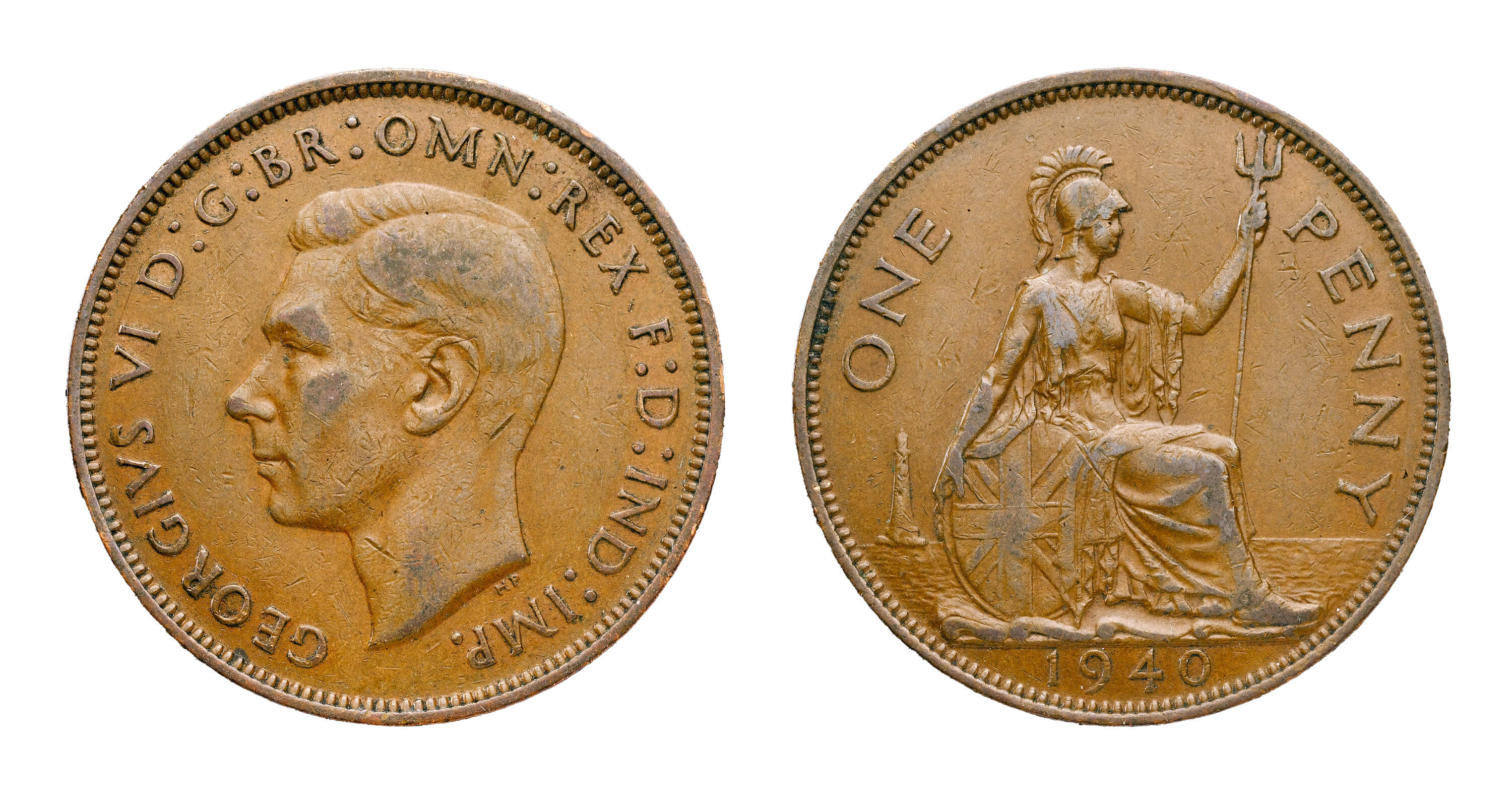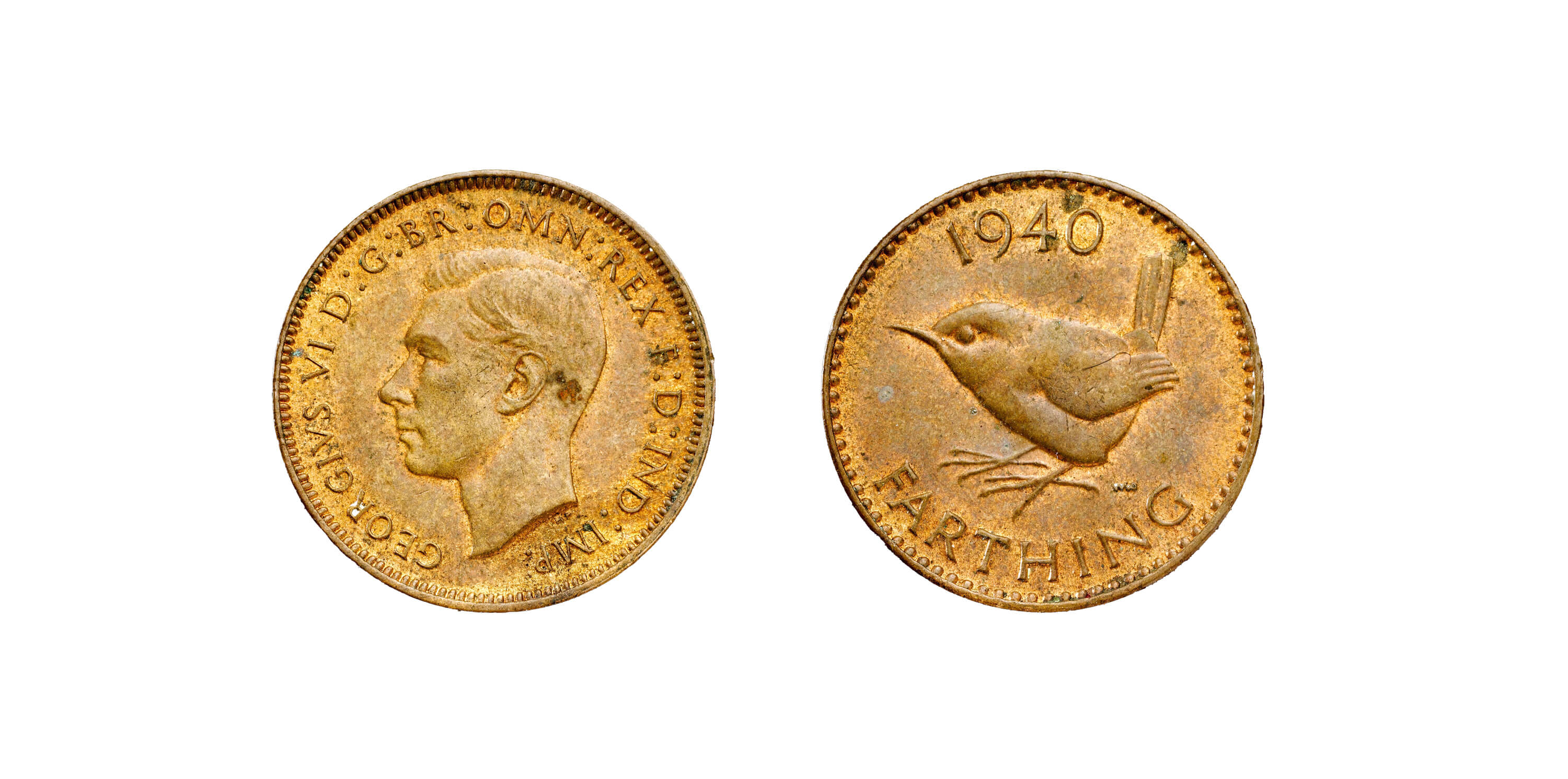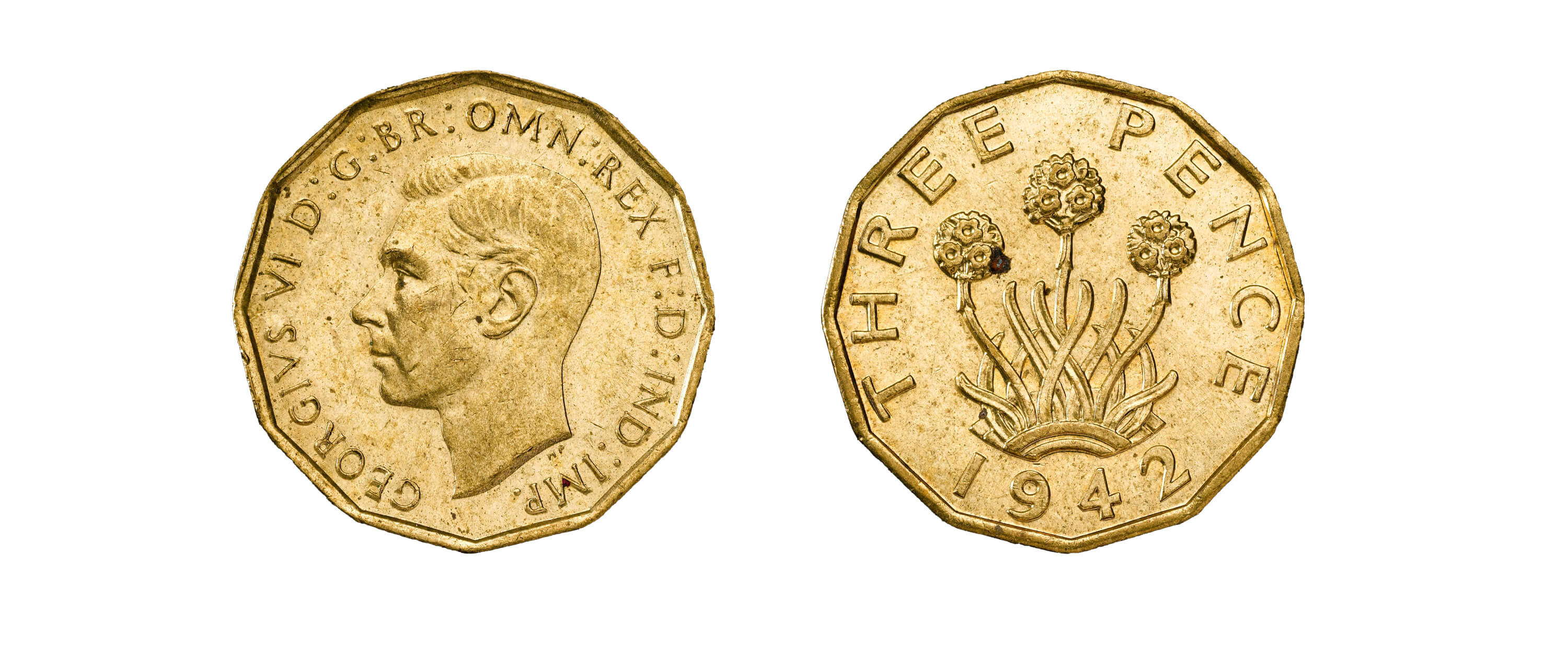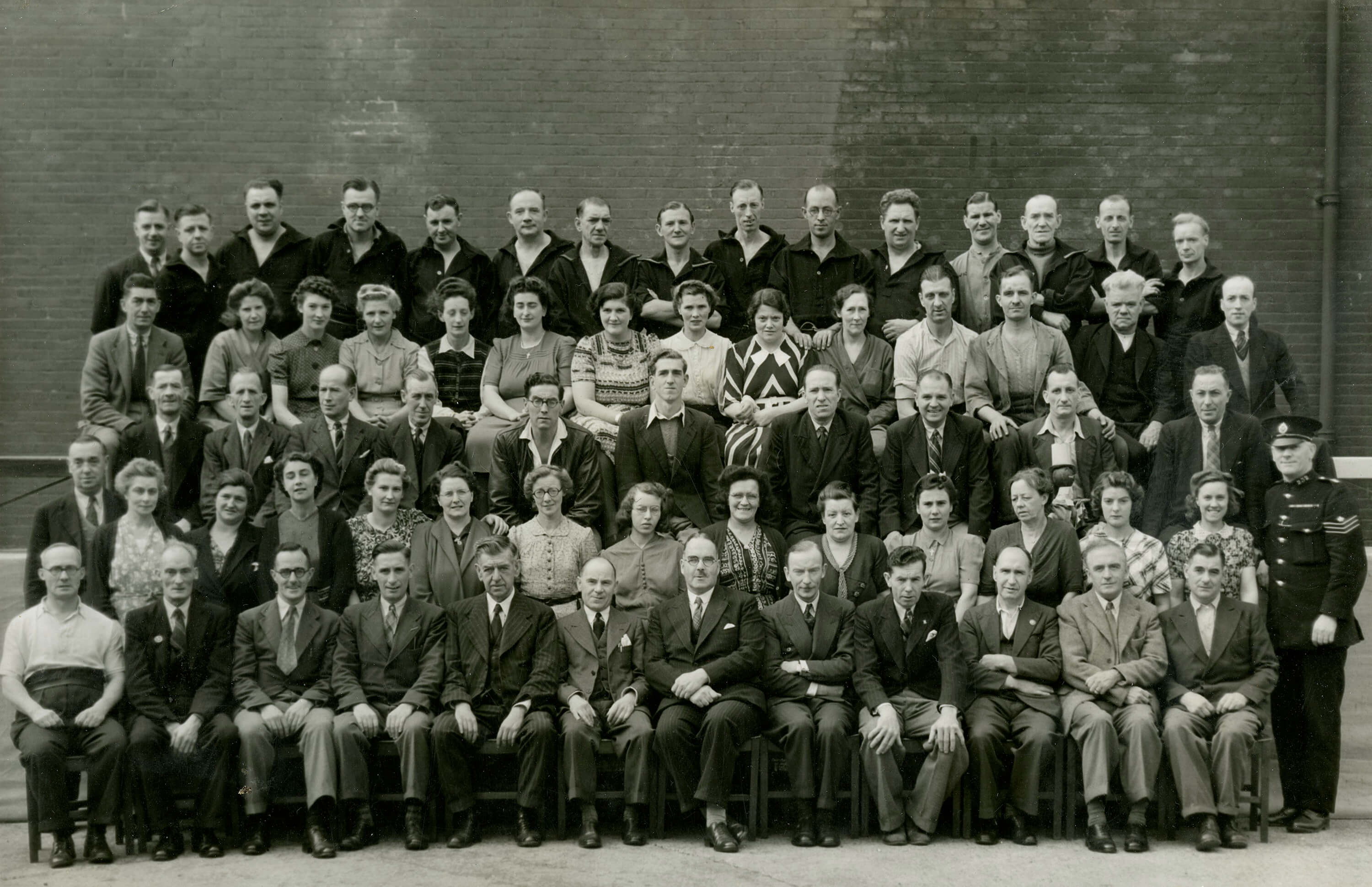Domestic coinage
The outbreak of war with Germany led to an increased demand for coinage. Despite enemy bombing, black outs, power cuts and intermittent gas supply the Royal Mint in London issued nearly 3 billion coins in the years 1939 – 1945. Demand reached its peak in 1943 with just under 700 million coins struck and issued.
Owing to a shortage of material, waste of any kind during the war was discouraged. This was particularly so with metal, which was required for armaments and munitions as well as the production of coins. In order to conserve copper and labour the striking of pennies was largely discontinued in 1940 and did not resume again for 3 ½ years. There were some exceptions to this, however, and small numbers of pennies were produced in the intervening years for Gibraltar and the West Indies. With an eye to thrift, these were all struck from tools dated 1940 to prevent waste.

Bronze penny dated 1940 RMM8235
The restrictions created by rationing during the Second World War changed the way that people used money. Farthings, which had largely ceased to have a functional use in the years immediately prior to the war, suddenly became an important part of daily transactions as ‘every family…had to pay or receive a farthing in weekly shopping’. An estimated 10,000,000 more of these coins were required by 1940 and production of farthings increased substantially on its pre-war level.

Bronze farthing dated 1940 RMM1786
When a new specification coin is introduced to replace an existing piece already in circulation, it can sometimes take time for the public to adapt. This was the case in 1937 when a 12-sided threepence was brought in to replace the much smaller, round silver threepence. Initially poorly received, the coin came into its own during the blackouts imposed as a result of enemy bombing and its distinctive shape made it easy to find in a pocket full of change. The convenience of being able to identify coins by their shape even inspired suggestions amongst some that the half-crown should also be polygonal.

Nickel-brass twelve-sided threepence RMM1715
The Royal Mint’s location adjacent to the London Docks meant it was at risk of bombing and so, in great secrecy, production of nickel-brass and bronze coins was moved out to Pinewood. The new Mint began operations in June 1941 and, being equipped with furnaces, rolling mills, blanking presses and eight Heaton coining presses, it was entirely self-sufficient. In addition to lower denomination base metal British coins, the temporary facility maintained the international profile of the Mint’s commitments by producing coins for Ireland, Iraq and Peru.

Staff at Royal Mint Iver Heath factory at Pinewood Studios
